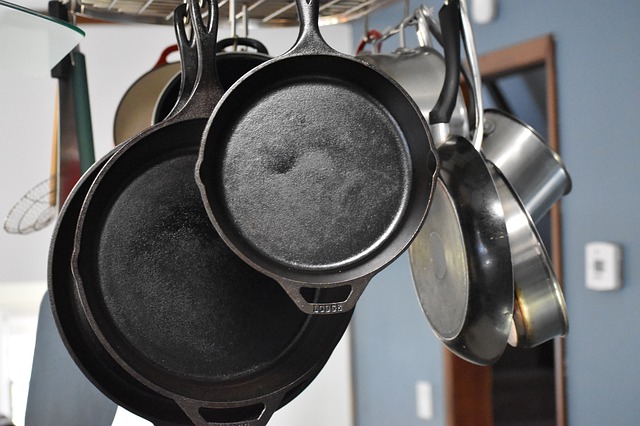How To Preserve Vegetables and Fruits
Summer is the time to preserve vegetables and fruits to enjoy summer’s bounty all year long! Whether you like the taste of fresh tomato, crunchy cucumber, the tartness of berries or the sweetness of cherries; all of that wonderful fresh produce won’t last long!
If you’ve ever found yourself with an overabundance of fresh summer veggies, you may wonder what to do with all of them before they go bad. There are plenty of ways to preserve your own vegetables from the garden, farmer’s market, or grocery store, and some may even surprise you! Here are some great tips on how to preserve summer’s bounty so that it will last throughout the year without using any special equipment.

Preserve Vegetables and Fruits through Drying or Dehydration
Drying vegetables is a great way to preserve them, and it’s an easy way too! Even though it takes a long time, it doesn’t require much effort on your part. There are three main ways to dry your produce: in an electric dehydrator, using an oven method, or by air-drying.
How to Dry Fresh Fruits and Vegetables in a Dehydrator
Dehydrating foods is easy as long as you have the right tools for it! You can choose from a variety of dehydrators, but the best ones are those that have multiple levels where you can stack your food in single layers for even longer drying times. You can go simple and pick up a dehydrator like this Presto Dehydrator, or if you’re really into food dehydration then feel free to get fancy with your Gourmia Dehydrator.
Here is how to do it:
- Rinse and dry the produce and cut it into uniform sized pieces, thin slices work the best.
- Load the prepared produce into the dehydrator and follow the instructions that came with the dehydrator.
- If the fruit or veggetables still feel sticky or spongy at the end of the process, they aren’t ready and need to be dried longer.
How to Dehydrate Fruit and Vegetables in the Oven
Drying in the oven is the same concept as using a dehydrator, cooking in the oven uses air and low heat from within to draw out the moisture, this method is less consistent and can take a bit longer to do.
Here is how to do it:
- Rinse and dry the produce and slice into thin slices.
- Preheat the oven to the lowest setting (about 175 to 200)
- While the oven is heating up line your baking sheets with parchement paper or a non-stick baking mat.
- If you have a cooling rack, place that on top of the lined baking sheet (this will help the air to circulate all around the produce).
- Arrange the prepared produce on top of the cooling rack if using, or on top of the parchment paper.
- Place the tray in the oven and cook, rotating the trays once or twice until the produce is dry.
The Best Produce for Dehydrating & Oven Drying: bananas, grapes, berries, apricots, tomatoes, mangoes, pineapples, sweet potatoes, zucchini.

How to Air-Dry Herbs
Air drying herbs is one of the best methods for preserving them, and you can also dry them using the two methods above, but I’ve found that air-drying is the most effective and simplest way to dry herbs.
Here’s how to do it:
- Rinse and dry the herbs.
- Tie string around the stems of the herbs and hag them upside down in a cool dry place for about a week.
- Once they have become dry and crisp, you can pick the leaves from their stems and crubmle them with your fingers. Or for more fragile herbs such as basil, crumble the entire herb with your fingers, a mortar and pestle or pulse them in a blender or food processor.
Note: Some fresh herbs such as basil, chives, cilantro and parsley will lose some of their flavors when they are dried. Freezing them is a better option, see how below.
The best herbs to air-dry: dill, lavender, rosemary, lemon balm, oregano, thyme.
How to Store Dryed Produce After Dehydrating it
Cool the produce off completely by letting it sit out at room temperature. Once it’s cool, store it in an airtight container preferably made from glass such as a mason jar or a glass snap top container. Place the dehydrated food at room temperature or a cool dry place.
After a few days shake the container if moisture appears place the produce back into the dehydrator or oven for another round of drying. Once completely dried and stored they will last in a cool dry place for several months.

Freezing your Produce to Preserve It
The easiest way to preserve your homegrown produce is to freeze it, and it won’t affect the flavor of the food. Smaller fruits and vegetables such as berries, peaches, cherries, cherry tomatoes, plum tomatoes are good candidates to be frozen as they are.
Heartier produce such as lima, waxed or green beans broccoli, Brussels sprouts carrots and cauliflower should be blanched before freezing them.
Here is how to blanch your produce before freezing it:
- Bring a pot of water to a boil, add the vegetables and wait for the water to boil again for about three minutes.
- Turn theheat off; rinse and drain the vegetables in cold water to stop the cooking.
- Once the produce is cool, proceed with the instructions below.
Here’s how to freeze your fresh fruit and vegetables:
- Blanch your produce (if the produce needs it) rinse it off in cold water and dry it.
- Spread the produce onto a baking sheet in a single layer and place them into the freezer. For larger-sized produce such as broccoli and cauliflower cut them into uniform sized pieces.
- Once the produce is completely frozen, take it out of the freezer and place the frozen vegetables into reusable plastic bags such as these stasher bags. They will last for up to 8 months.
You can also puree fresh vegetables and fruits before freezing them. I like to do this with tomatoes so that I can make fresh-tasting spaghetti sauce in the winter, but it also works well for tomatillos, apples (apple sauce), and peaches.
Here’s how to puree your produce before freezing it:
- Cut the produce into chunks and cook it on top of the sotve unitl it becomes soft.
- Allow it to cool off and run it through a food processor blender.
- Place the pureed vegetables or fruit in a freezer safe container and freez for up to eight months.
Tip! It’s a good idea to measure the puree into one or two cup portions which is perfect to add to sauces, stews and soups.
The best vegetables to freeze: Just about any fruit or vegetable such as bell peppers, hot peppers, string beans, carrots, peas. broccoli, cauliflower, Brussels sprouts. It’s easier to lost those that arent’ good candidates because of their water content such as: leafy greens and summer squash.

Lacto-Fermentation to Preserve Produce
Lacto-fermentation may not be a household word but don’t let that scare you away from this truly simple food preserving technique. You may have seen fermented cabbage (aka sauerkraut) or other veggies at your local grocery store or farmers market, and maybe even wondered what was going on. Lacto-fermentation typically uses salt brine to prevent harmful bacteria from entering the food during the fermenting process. By fermenting food, important enzymes remain intact, making those valuable nutrients available to us even as we store them away! Pickles, sauerkraut and kimchi are the easiest and most common foods to ferment.
Here’s how to make fermented pickles :
- Stuff one to two cleaned and cucumber spears or slices into a steralized one quart glass jar along with a few cloves of fresh garlic.
- Add a tablespoon of sea salt, and fill the jar with filtered water; making sure the cucumbers are totally submerged in the water.
- Leave the jar at room temperature for a few days. After two to three days you should notice bubbles in the water; this means the pickles are fermenting. Check the taste, if they are not sour enoughfor your taste, leave them out for another day and check the taste again. Refrigerate them once the cucumbers have reached a taste that you like.
- Store the fermented pickles in the refrigerator for one month.
Here’s how to ferment cabbage to make sauerkraut:
- Shred one small to medium head of cabbage and place it into a large bowl.
- Add one tablespoon of sea salt and let the cabbge sit for 10 to 15 minutes.
- After 15 minutes use your hands to massage the cabbge, so it will release water.
- Stuff the head of cabbage into a sterilized one-quart mason jar, pushing it down and packing it as you fill it up. Once the jar is filled, the cabbage should be submerged in the water from the sauerkraut.
Note: You might be thinking that the jar is too small for all of that cabbage, don’t worry it will fit! - Cover the jar with a cheese cloth or light towel and let it sit at room temperature for a few days.
- Each day press it down using your fist or a mallot to make sure it is submerged. After a few days you should notice bubbles appearing, check the taste daily after that. Once it reaches a flavor that you like, store it in the refrigerator for up to six months.
Note: When using the sauerkraut, be sure to scoop it out of the jar with a clean spoon to avoid bacteria entering it and spoiling it.
As you can see, home food preservation is easy once you know how to. You can choose from a variety of simple methods and choose the easiest method for your favorite vegetables and fruit. Freezing and storing food in the refrigerator won’t affect the taste as much as drying or fermenting. However, it’s worth researching everything you can about the storage methods relating to the specific produce you’re growing. This will help you to identify the best way to preserve your home-grown food so that you can enjoy the fruits of your labor.

